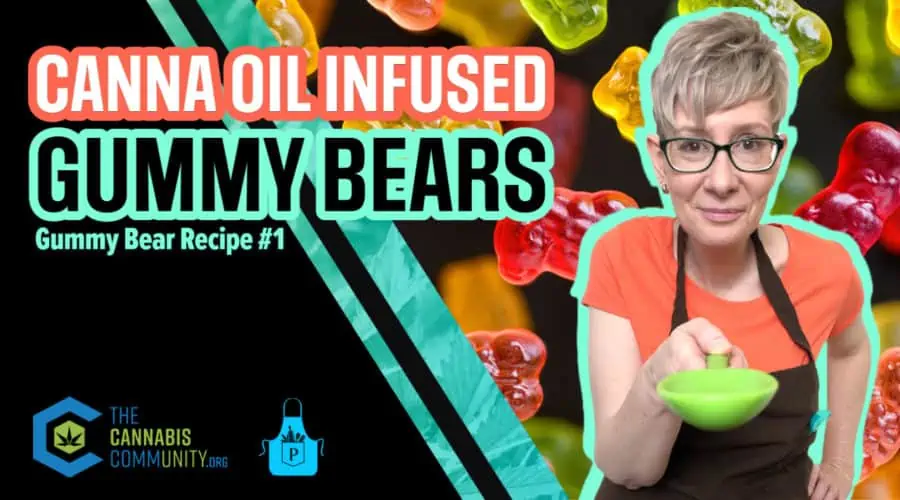What Is Titration? Benefits, Tips and How To Do It Right
Table of Contents
What is Titration?
According to science, titration is the process of figuring out the smallest amount of the active ingredient in a medicine’s formulation to produce the intended effects.
Titration is when patients select the medication dosage that will treat their symptoms the best while having the fewest side effects.
Based on health circumstances, medical history, current medications, and how a patient responds to the new prescription, doctors will assess each case individually and prescribe the proper titration.
Finding the ideal balance between the various cannabinoid (usually THC and CBD) components, the illness being treated, and your body’s specific response is also important when using medical marijuana.
Chances are your medical marijuana caregiver or dispensary will advise you to choose a product that is “more THC-dominant” or “more CBD-dominant,” but ultimately it will be up to you, the patient, to titrate to your own specific dosage profile.
There is no “recommended dosage” for any one patient, despite the many studies that have supported the efficacy of medical marijuana uses.
The best cannabis compound, or ”cannabinoid,” for a particular concern may have been identified by medical cannabis scientists, but the precise dosage and regimen for each ingredient are individual to each patient.
Each person’s dose profile is very individualized, just like our bodies and the various issues that can influence them.
Titration starts with a low dose, and gradually increases the dose over a period of days or weeks.
Your lowest dose should be just low enough to feel the desired effect, often producing noticeable relief and/or improved symptoms.
In theory, the higher the dose you take, the greater the relief, but if you take too much, you may feel uncomfortable or even experience an unpleasant side effect.
Titration is an important part of the learning curve for anyone using medical cannabis.
If you’re very new to medical cannabis, starting with the lowest dose possible is a good idea and seeing how you feel before working your way up over time.
Self-Titration: What Is It?
Self-titration is the process of gradually raising the medication amount to determine the ideal dosage.
Patients who use medical marijuana generally self-titrate to discover the lowest amount of medication that best relieves their symptoms, which is also known as the lowest effective dose.
When using cannabis, it’s crucial to establish the smallest effective dose because there is no other good method to measure the intensity of the desired effects. The greatest sustainable dosage can only be found in this way.
As you use more cannabis, your tolerance will rise. But starting out with a dose that is too high may have undesirable psychoactive effects and raise your tolerance over time to an unnecessarily high degree.
Tolerance develops when the body starts to produce more of its own endocannabinoid.
Endocannabinoids are chemical compounds that our body produces which are activated when bound to a cannabinoid receptor to correct our bodies’ cannabinoid imbalances.
As tolerance develops, the body produces more of these chemicals, and this causes the body to need more of the cannabinoid to experience the desired effects.
This means that the medicine has less of an effect, and you will need to increase the dose to achieve the same effect.
What Are the Benefits of Self-titration?
Any patient with any symptoms under any conditions may self-titrate, and it’s probably the best method to avoid accidentally getting too high along the way.
Self-titration enables you to discover the dosage that will be specifically tailored to you and your symptoms and that will be able to sustainably work for you to maintain a healthy level of tolerance.
Self-titrating can also prevent you from suffering from the side effects of excessive cannabis use, which include symptoms like perspiration, shakiness, paranoia, and severe discomfort.
How Do I Self-Titrate?
Finding your ratio and your dose are the two key phases of self-titration. A general rule is to “start low and go slow,” which means increasing your serving size gradually until it produces the desired effects, especially when THC is present.
Determine a Cannabis Product Ratio
A cannabis product’s ratio can change, ranging from being THC- or CBD-dominant to concentrating on relatively uncommon cannabinoids like CBG and THCV.
The following are the main chemical profiles (“chemotypes”) of cannabis and hemp plants and products:
- Type I (THC-Dominant)
- Type II (Mixed-Ratio THC and CBD)
- Type III (CBD-Dominant)
- Type IV (Dominant in a Minor Cannabinoid)
Consumers should think about the benefits they want and the cannabinoids supporting those effects while choosing their optimal ratio.
Determining the level of THC that will be beneficial to them or not and ensuring that they experience little to no adverse side effects will be significant factors for many people.
For instance, a customer experiencing anxiety would probably seek a CBD-rich product with little or even trace amounts of THC.
Other patients suffering from pain will probably seek out products with a 1:1 ratio of THC to CBD, which have been said to be particularly useful for treating pain.
Determine Your Own Cannabis Dosage
Cannabis self-titration can be a little challenging at first, but the advantages over time greatly outweigh the drawbacks.
You must first select the lowest available dosage of the cannabis product you’ll be using in order to successfully self-titrate. For example, you can take one puff of cannabis vaporizer or 0.01 grams of edibles on your first consumption.
If you’ve been using cannabis for a while, your tolerance may come into play when self-titrating.
If you have already developed some level of cannabis tolerance, start with the lowest known dosage that has an effect. 24 hours is the standard window in self-titration and is commonly used when starting.
After you’ve identified the lowest dosage possible, you should consume that amount and wait until all effects have entirely worn off.
If you ever have undesired side effects, you should cut back to the previous dose that didn’t, which may also be the ideal serving size for you.
The ideal dosage will depend on your particular symptoms, but most patients choose a dosage that is both potent and useful, while having the fewest psychoactive side effects possible.
When you’ve found a dosage that seems right for you, you should try to stick to it whenever you take your medication on a regular basis.
It is very important that you record your self-titration in a notebook or with a medical marijuana treatment plan.
Previous Articles to Consider:
- Cannabis For Rheumatoid Arthritis: Effective Topical & Transdermal Cannabinoid Therapy in Treatment
- An Epidemic: How Cannabis is Combating the Opioid Crisis
- Medical Cannabis vs. Drug Tests: A Battle for Patients’ Rights
Tips on How To Do Titration Right
Be Patient
Patience is essential when trying a new cannabis product or regimen. Recognize that finding the right dosage may take a few weeks.
The benefits will be worthwhile once you determine your ideal amount.
Start Low and Go Slow
Start with the smallest possible amount and gradually increase it over the period of several days or weeks, not just a few hours.
This most likely implies that initially treating your symptoms will take longer, but you’ll have a better chance of getting long-term consistent, lasting relief.
Evaluate the Effects
Spend some time connecting to your body and evaluating the effects after taking your cannabis treatment.
Identify if your symptoms have changed, if you have experienced any unfavorable effects, or if the effects have changed since you last used this cannabis dosage.
Track Your Intake in a Cannabis Journal
Keep a cannabis journal to compare effects. A surprisingly easy strategy for attaining the best outcomes and value from your cannabis treatment is keeping a written record of your cannabis dosage and results.
Simply note the essentials, such as:
- Time and amount of dosage
- Food taken
- Other medicines
- Effect and How long for it to take
- Difference from previous dosage
Further research on the advantages and disadvantages of cannabis self-titration among users is needed as more states legalize recreational and medicinal cannabis.
Low doses have been demonstrated to be advantageous, but various researchers have found a link between high dosage and a greater number of psychiatric effects, including the possibility of self-dependence.
More research in this area is required, and before beginning any self-titration techniques, you should speak with a doctor who specializes in medicinal cannabis.
Titrating With Medical Cannabis? Get Certified for Your Card Today
Enjoyed This Content? Read More:
-
How to Make Cannabis-Infused Coconut Oil or MCT Oil: Crockpot Recipes
In this guide, you’ll learn how to make cannabis-infused coconut oil or MCT oil, decarboxylate cannabis, or choose to infuse cannabis into any oil of your choice.
-
How to Make THC Gummy Bears with Canna Oil
This is a great no-fail recipe for beginners. The corn syrup in this recipe will help your gummy bears have that nice and chewy texture we’ve all come to love.
-
Burning Weed Odor Not Cause for Warrantless Search, Rules Illinois Supreme Court
A Landmark Case for IL Medical Cannabis Patient Protections On September 9th, the Illinois Supreme Court issued a major victory for cannabis consumers and patients, declaring that the aroma of burnt cannabis is insufficient probable cause for a warrantless search. Illinois has long been at the forefront of the fight for plant medicine. Medical patients…
-
GMO Cookies: A Strain Review of Its Potent Aroma and Powerful Effects
GMO Cookies is a popular cannabis strain for homegrow. Here’s what you need to know to get started with these seeds.
-
Cherry Pie Cannabis Strain: A Sweet Treat with Potent Effects
Cherry Pie is a popular cannabis strain for homegrow. Here’s what you need to know to get started with these seeds.








